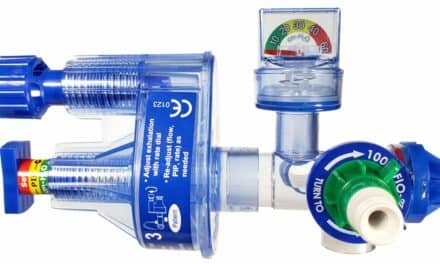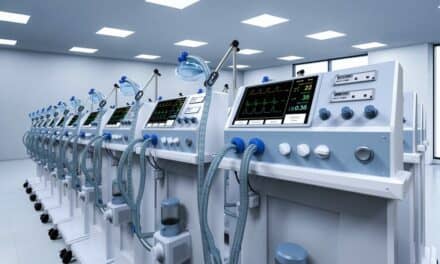Using a single ventilator to support two patients could be feasible in crisis situations involving a ventilator shortage, researchers have found.
A team of clinical investigators from Danville, Pa.-based Geisinger Health System partnered with Bucknell University and Kitware, a New York-based software research and development company, to develop a computational model to simulate varying scenarios in which two patients share one ventilator.
The COVID-19 pandemic has created shortages of medical supplies and equipment, including life-saving ventilators, around the world. Earlier this year, the Federal Emergency Management Agency (FEMA) and the U.S. Department of Health and Human Services issued guidelines for ventilator-sharing in cases of ventilator shortage.
However, studies of this practice are few, and “the pace of conventional research is too slow when addressing a pandemic crisis,” the research team write. “Computational simulation provides an opportunity to quickly develop guidance over a wide range of possible clinical scenarios without incurring patient risk.”
Using Kitware’s Pulse Physiology Engine software, the team created whole-body physiological simulations of 287 COVID-19 patients with varying levels of lung function and oxygen saturation index (OSI) that could be successfully managed using a dedicated ventilator. A whole-body physiological simulation allows researchers to observe secondary effects that would not be apparent when modeling mechanics of ventilation alone. The team then used the software to calculate outcomes for all possible modeled patient pairings to project the success of using a shared ventilator for each pair.
Patients with similar levels of lung function and comparable OSI were most likely to have satisfactory outcomes when paired to a single ventilator, the team found. The study was published in PLOS ONE.
Sharing ventilators should be considered a last-resort approach in a situation where all available ventilators have been deployed, so it is most likely to be used in developing countries, researchers say.
“In resource-limited regions of the world, the COVID-19 pandemic has and will continue to create equipment shortages,” says S. Mark Poler, M.D., anesthesiologist at Geisinger and a co-author of the study. “While single-patient ventilation is preferable, under extreme circumstances and in resource-challenged regions, multi-patient ventilation is a potentially viable option and can significantly increase the capacity to care for critically ill patients. Our simulations provide a conceptual framework and guidelines for clinical patient selection.”
“This study shows that the Pulse Physiology Engine can simulate realistic equipment mechanics and patient physiology for a variety of illness severities,” adds Rachel Clipp, PhD, a technical leader on Kitware’s Medical Computing Team and co-author of the study. “Having the ability to leverage these capabilities during a pandemic provides valuable clinical information that can be used to inform medical treatment in resource-constrained situations.”





